Last Updated on May 19, 2023 by PixelPluck
Photography, like any other art form, allows for creative expression, and breaking traditional rules can often result in unique and captivating images. While it’s important to understand the fundamentals of photography, experimenting and bending the rules can lead to interesting and innovative results. Here are 10 photography rules that you can consider breaking to add a touch of creativity to your work. Read this Ultimate Guide to 10 Photography Rules that You Should Break.
In a world saturated with rules and guidelines, it’s time to shatter the barriers that confine our artistic vision. Photography is an art form that thrives on pushing boundaries, questioning norms, and defying expectations. It’s time to break free from the shackles of convention and embrace the liberating path of rule-breaking photography. Let us challenge the status quo, unlock our creative potential, and discover a whole new realm of captivating and breathtaking images. Are you ready to unleash the rebellion within and redefine the art of photography?

Rule of Thirds
The rule of thirds is a fundamental composition guideline that suggests dividing the frame into a grid of nine equal parts by placing two equally spaced horizontal lines and two equally spaced vertical lines. According to this rule, the points where these lines intersect are considered ideal placement areas for the main subject of a photograph. While the rule of thirds can help create balanced and visually pleasing compositions, breaking this rule intentionally can lead to unique and compelling images that stand out from the norm.
When you break the rule of thirds, you open up a world of possibilities for creative compositions. Placing your subject at the center of the frame, for example, can create a sense of symmetry and balance that draws the viewer’s attention directly to the subject. This can be particularly effective when photographing symmetrical objects, or portraits, or when you want to emphasize the subject’s centrality or importance.
Breaking the rule of thirds can also involve positioning the subject in unconventional or unexpected locations within the frame. By deliberately placing the subject towards the edges or corners of the composition, you can introduce a sense of tension, and imbalance, or create a more dynamic visual impact. This technique can add a sense of movement, and anticipation, or create a feeling of being off-balance, thereby engaging the viewer’s curiosity and imagination.

Additionally, breaking the rule of thirds allows you to experiment with alternative compositional techniques. For instance, you can explore the use of diagonal lines or patterns that cut through the frame, leading the viewer’s eye directly to the subject. This can create a strong sense of visual flow and energy within the image, capturing the viewer’s attention and making the composition more visually engaging.
Furthermore, breaking the rule of thirds can be particularly effective when combined with other compositional elements. You can experiment with unconventional framing techniques, such as partially obscuring the subject with other objects or using natural elements like foliage or architecture to frame the subject uniquely. By doing so, you create a sense of depth, context, and visual interest that can enhance the overall impact of the photograph.
Breaking the rule of thirds in photography requires a conscious decision and understanding of the impact you want to create. It is important to have a clear vision and purpose behind your compositional choices. By breaking this rule intentionally, you can create images that challenge traditional expectations, evoke emotions, and leave a lasting impression on the viewer.
However, it’s important to note that breaking the rule of thirds doesn’t mean completely disregarding composition. Understanding the rule of thirds and other compositional guidelines is crucial because it provides a solid foundation for creating visually pleasing images. By having a strong understanding of these principles, you can break the rules effectively and purposefully, rather than by accident or lack of knowledge.
In summary, breaking the rule of thirds in photography allows you to explore new creative possibilities and push the boundaries of traditional compositions. Whether it involves centering the subject, positioning it in unconventional locations, or experimenting with alternative framing techniques, breaking the rule of thirds can result in unique and captivating images that convey your artistic vision and engage the viewer on a deeper level.
Perfect Exposure
While achieving technically perfect exposure is often the goal, don’t be afraid to experiment with intentionally overexposed or underexposed images. Overexposure can create a dreamy or ethereal effect, while underexposure can add drama and mystery to your photographs. These techniques can evoke emotions and create a unique atmosphere in your images.
Perfect exposure, in photography, refers to achieving a technically flawless balance of light and shadow in an image. It involves ensuring that the highlights are not overexposed and that the shadows retain detail without being too dark. While perfect exposure is often the goal in photography, intentionally breaking this rule can lead to creative and visually captivating images that evoke mood, atmosphere, and artistic expression. Get yourself an exposure meter.
One way to break the rule of perfect exposure is by deliberately overexposing or underexposing your images. Overexposure, intentionally allowing more light into the camera than necessary, can create a dreamy and ethereal effect. It can soften details, introduce a sense of brightness, and give the image a whimsical or romantic quality. This technique is particularly effective when photographing subjects like portraits, landscapes, or scenes with soft, diffused lighting. Overexposure can enhance the mood and convey a sense of nostalgia or fantasy. Learn to use external flash creatively.
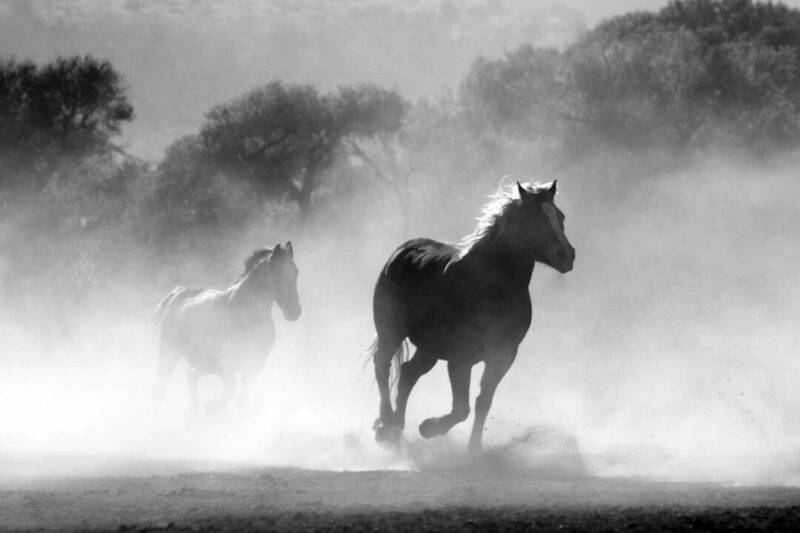
On the other hand, intentionally underexposing your images can add drama, mystery, and a sense of intrigue. By intentionally reducing the amount of light entering the camera, you can create deep shadows, increase contrast, and make certain elements appear more prominent. This technique is often used in genres like film noir or low-key photography, where the play between light and shadow creates a moody and atmospheric atmosphere. Underexposure can also be used to create silhouettes or to emphasize specific details while leaving the rest of the frame in darkness.
Breaking the rule of perfect exposure can also involve deliberately introducing intentional exposure errors. This can include purposefully allowing areas of the image to be blown out or completely blacked out. These intentional errors can add a sense of abstraction, remove distracting details, and create a more minimalist or high-contrast aesthetic. By embracing exposure errors, you can convey emotions and tell a visual story that goes beyond technical perfection.
Furthermore, exploring alternative lighting conditions can lead to breaking the rule of perfect exposure. Challenging the traditional notion of even lighting can result in unique and visually striking images. This can involve deliberately shooting in extreme lighting conditions, such as harsh midday sun or low-light environments, where achieving perfect exposure becomes difficult or impossible. Embracing these lighting challenges can create interesting shadows, highlights, and textures that add depth and character to your photographs.
Breaking the rule of perfect exposure requires a deliberate and conscious decision to deviate from technical precision. It’s important to understand the fundamentals of exposure and how to achieve proper exposure before intentionally breaking this rule. By having a strong understanding of exposure, you can effectively control and manipulate light to achieve the desired creative effects.
In summary, breaking the rule of perfect exposure in photography opens up a realm of creative possibilities. By intentionally overexposing, underexposing, or introducing intentional exposure errors, you can create images that evoke mood, atmosphere, and artistic expression. Experimenting with alternative lighting conditions and challenging traditional notions of even exposure can result in visually captivating photographs that go beyond technical perfection and engage the viewer on an emotional and artistic level.
Focus on Sharpness
While photographers generally strive for sharpness, deliberately embracing intentional blur or selective focus can lead to captivating and artistic images. Experiment with shallow depth of field to create a soft, dreamlike effect, or intentionally move your camera during a long exposure to introduce intentional blur into your shots. These techniques can add a sense of movement or convey a more subjective and impressionistic feel to your photographs.
Achieving sharpness is often considered a key aspect of creating technically proficient and visually pleasing images. However, deliberately breaking the rule of focusing on sharpness can lead to unique and artistic photographs that evoke different emotions and aesthetics.
One way to break this rule is by embracing intentional blur or selective focus. By purposefully introducing blur into your images, you can create a sense of movement, depth, and atmosphere. This technique can be particularly effective in capturing motion or adding a dreamy, ethereal quality to your photographs. Experiment with using a wide aperture to create a shallow depth of field, selectively focusing on specific elements while allowing the rest of the image to softly blur into the background. This can draw attention to your subject and create a sense of depth and separation from the surroundings.
Another way to break the rule of focusing on sharpness is by exploring intentional camera movement. Instead of capturing perfectly sharp and frozen images, you can intentionally move the camera during the exposure to introduce motion blur or abstract patterns. This technique can add a dynamic and artistic element to your photographs, conveying a sense of energy and emotion. Experiment with panning, rotating the camera or deliberately shaking it to create unique and expressive images. This technique is particularly effective in capturing subjects such as cityscapes, landscapes, or even portraits, where the intentional blur can add a sense of creativity and spontaneity.
Breaking the rule of focusing on sharpness also involves embracing the inherent qualities of different lenses and optics. Lens characteristics, such as vignetting, distortion, and lens aberrations, can add a distinctive and artistic touch to your photographs. Instead of trying to eliminate these imperfections, you can intentionally emphasize and incorporate them into your compositions. This can create a vintage or artistic look, adding character and charm to your images.
Additionally, breaking the rule of focusing on sharpness allows you to experiment with alternative techniques such as long-exposure photography. By intentionally using longer shutter speeds, you can capture the passage of time and create surreal or abstract images. This technique is particularly effective in capturing flowing water, light trails, or the movement of clouds. The intentional blur resulting from longer exposures can add a sense of tranquility, mystery, or dynamism to your photographs.
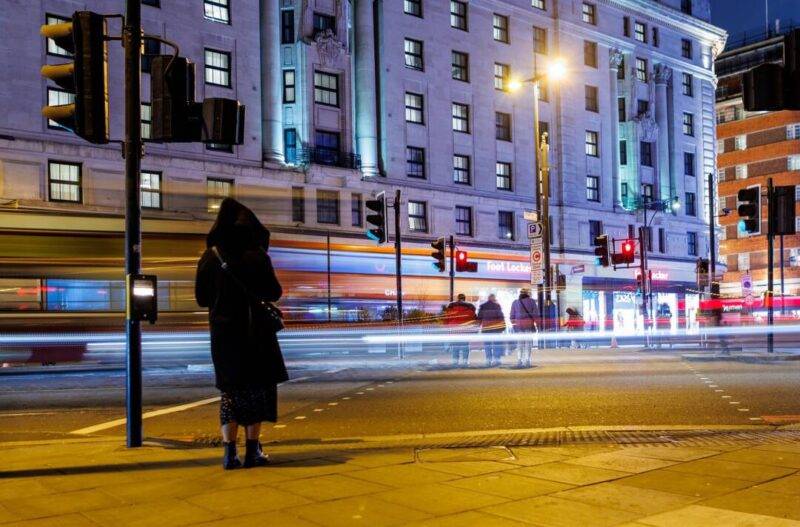
Breaking the rule of focusing on sharpness requires a deliberate and creative approach. It’s important to have a clear vision and intention behind your use of blur or selective focus. Consider the mood, story, or emotion you want to convey and how intentional blur can enhance or emphasize those elements. Understanding the technical aspects of your equipment, such as aperture settings, lens characteristics, and camera movement techniques, will help you execute your creative vision effectively.
However, it’s essential to note that breaking the rule of focusing on sharpness doesn’t mean abandoning the pursuit of sharp images altogether. It’s important to understand and master the technical aspects of photography, including achieving sharp focus when it’s appropriate for the subject and desired outcome. By understanding of focusing the rule on sharpness, you can break it intentionally and purposefully, using blur and intentional focus to create artistic and visually compelling photographs.
In summary, breaking the rule of focusing on sharpness in photography opens up a realm of creative possibilities. Embracing intentional blur, selective focus, intentional camera movement, and lens characteristics can add depth, atmosphere, and artistic expression to your images. By breaking this rule with purpose and intention, you can create unique and visually captivating photographs that go beyond the conventional pursuit of sharpness and evoke emotions, tell stories, and engage viewers in a more creative and artistic form.
Straight Horizons
The conventional wisdom suggests that a level horizon is essential in landscape photography. However, breaking this rule by purposefully tilting the camera can create a dynamic and unconventional composition. An angled horizon can add energy, tension, and visual interest to your photographs, making them stand out from more traditional landscape shots.
A straight horizon is often considered visually pleasing and provides a sense of balance and stability. However, intentionally breaking this rule by purposefully tilting the camera can lead to dynamic and captivating compositions that defy expectations and create visual interest.
When you break the rule of straight horizons, you introduce a sense of energy and dynamism into your photographs. Tilting the camera intentionally can create a sense of movement or imply action within the scene. It adds a visual twist that engages the viewer and challenges their perception of the world. This technique is particularly effective when photographing subjects that convey motion, such as sports events, dance performances, or bustling city streets.
By intentionally tilting the horizon, you can also create a more immersive and subjective experience for the viewer. It can simulate the feeling of a sense of unease, mystery off-kilter or convey, or even surrealism. This be particularly powerful when photographing abstract technique can or conceptual subjects, as it allows you to express ideas and emotions in a visually striking and thought-provoking manner.
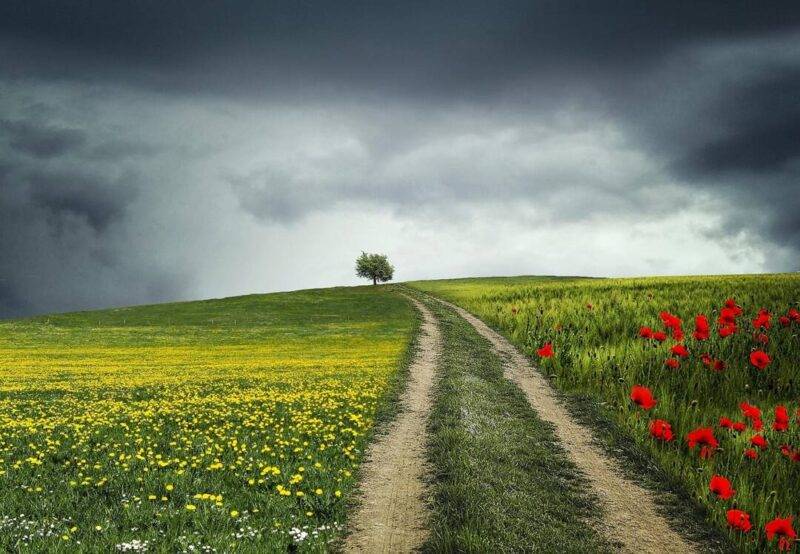
Breaking the rule of straight horizons can also provide a creative solution to composition challenges. In certain situations, the scene may lack visual interest or appear mundane when captured with a level horizon. By tilting the camera, you can introduce diagonal lines and angles that add a sense of drama, leading the viewer’s eye through the frame and creating a more engaging composition.
Furthermore, breaking the rule of straight horizons can help you convey a unique perspective or point of view. It allows you to explore different angles and viewpoints, resulting in fresh and unconventional compositions. By tilting the camera, you can experiment with unconventional framing, emphasizing certain elements or subjects within the frame while de-emphasizing others. This technique adds a level of creativity and visual intrigue to your photographs.
However, it’s important to note that breaking the rule of straight horizons should be done purposefully and with careful consideration. It’s essential to have a clear intention behind tilting the camera and ensure that it serves the overall composition and storytelling of the photograph. The tilt should feel intentional and not appear accidental or arbitrary.
While breaking the rule of straight horizons can lead to visually captivating images, it’s still important to understand the principles of composition and be mindful of the impact it has on the overall aesthetic of your photographs. It’s crucial to have a solid foundation in traditional composition techniques before intentionally breaking the rules. This understanding allows you to make informed creative choices and ensures that the intentional tilt enhances the visual impact and emotional resonance of your images.
In summary, breaking the rule of straight horizons in photography opens up a realm of creative possibilities. By purposefully tilting the camera, you introduce energy, dynamism, and visual interest into your compositions. It allows you to convey movement, create a subjective experience, overcome composition challenges, and explore unique perspectives. However, it’s important to approach this technique with intentionality and a clear vision to ensure that the tilt enhances the overall impact and narrative of your photographs.
Avoiding Lens Flare
Lens flare occurs when light from a bright source, such as the sun or artificial light, enters the camera lens and interacts with the lens elements, causing internal reflections and scattering. This phenomenon results in various artifacts, including reduced contrast, ghosting, and colorful streaks across the image. Traditionally, photographers have aimed to eliminate or minimize lens flare by utilizing lens hoods, adjusting shooting angles, or avoiding shooting directly into bright light sources. Experiment by deliberately including the sun or other light sources in your frame to create unique and visually engaging photographs. You can also get yourself special effect lens flare filters for creative use.

Creative Applications of Lens Flare
- Adding a Sense of Drama and Atmosphere: Lens flare can infuse a photograph with a sense of drama, intensity, and atmosphere. When used effectively, it can create a dreamy or nostalgic ambiance, enhancing the emotional impact of the image. The soft, diffused light and streaks of lens flare can convey a whimsical or romantic mood, transforming an ordinary scene into something extraordinary.
- Enhancing Composition and Depth: Lens flare can serve as a compositional element, adding depth and visual interest to an image. It can provide a leading line, guide the viewer’s gaze, or create a natural frame around the subject. The presence of lens flare can break up negative space, balance the composition, and create a dynamic interplay of light and shadow.
- Creating Artistic Effects: Lens flare can be seen as a form of artistic expression. Photographers can experiment with different techniques to achieve unique and compelling effects. By intentionally manipulating the position of the light source or using filters, photographers can create custom flare patterns, vibrant bursts of light, or even incorporate lens flares as bokeh elements. These intentional flares can add a touch of magic or surrealism to the photograph, elevating it from a literal representation to a more interpretive and subjective visual experience.
- Embracing Imperfections: In a world where digital photography allows for precise control over every aspect of an image, deliberately introducing lens flare can be a way to embrace imperfections and inject a sense of authenticity into the photograph. Lens flare can create a sense of unpredictability, mimicking the organic and imperfect nature of capturing moments through a lens. It adds a human touch to the image, reminding viewers that photography is an art form crafted by imperfect hands.
By intentionally incorporating lens flare into their compositions, photographers can add drama, atmosphere, depth, and unique artistic effects to their images. However, it’s important to remember that breaking this rule requires a deliberate and thoughtful approach. It’s essential to understand the technical aspects of lens flare, experiment with different techniques, and use it purposefully to enhance the overall visual narrative. Embracing lens flare as a creative tool allows photographers to push the boundaries of traditional rules and create visually captivating and emotionally engaging photographs.
Motion Blur
The conventional approach in photography is to freeze action using fast shutter speeds to capture sharp images. However, intentionally capturing motion blur can convey a sense of movement, energy, and dynamism in your photographs. Experiment with slower shutter speeds to deliberately blur moving subjects, such as flowing water, moving vehicles, or people in motion. This technique can add a sense of excitement and convey the passage of time in your images.
In photography, capturing stillness is often celebrated as the epitome of mastery. However, there exists an enchanting technique that challenges this notion and beckons us to embrace the allure of movement — motion blur. This ethereal dance between light and time opens a gateway to artistic expression, evoking emotions and narratives that transcend the boundaries of frozen moments.
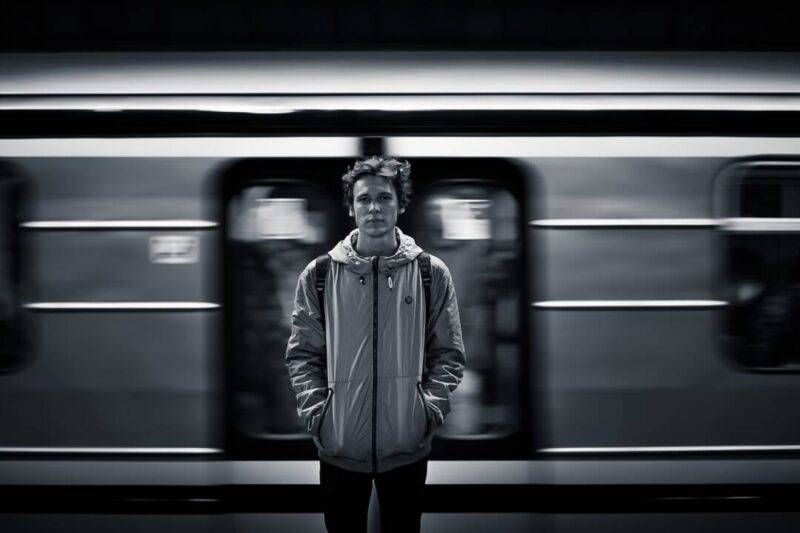
Join us on a visual journey as we explore the captivating world of motion blur in photography.
Creative Motion Blur
- The Essence of Motion Blur: Motion blur is the deliberate blurring of moving subjects within a photograph. It occurs when the shutter speed is intentionally set to a slower value, allowing the sensor to capture the continuous path of light over some time. By embracing the fluidity of motion, photographers can create mesmerizing images that encapsulate the energy, dynamism, and grace inherent in the movement.
- Unleashing Creativity: Motion blur in photography offers a realm of infinite creativity. Photographers can manipulate the camera settings, such as shutter speed, to convey a desired effect. The longer the exposure time, the more pronounced the blur becomes, transforming everyday scenes into dreamlike tableaus. A waterfall cascades into a silky ribbon of water, cars morph into streaks of color, and people become transient figures leaving traces of their presence.
- Conveying Emotion and Storytelling: Motion blur has the unique ability to evoke powerful emotions and convey narratives within a single frame. The intentional blurring of a subject can suggest a sense of urgency, anticipation, or tranquility. In a photograph of a bustling city street, the trails of light left by moving vehicles narrate the pulse and rhythm of urban life. Similarly, a blur surrounding a sprinting athlete can evoke a surge of adrenaline, capturing the intensity and determination of the moment.
- Painting with Light: Motion blur transforms light into an artist’s brush, allowing photographers to paint ephemeral strokes across their canvases. The streaks of light create dynamic patterns and abstract compositions that transcend the constraints of reality. The interplay between stationary objects and blurred elements creates a juxtaposition that engages the viewer’s imagination, inviting them to decipher the hidden stories within the frame.
- Enhancing the Essence of Time: While photography traditionally freezes moments in time, motion blur extends beyond that realm, showcasing the passage of time within a single frame. It becomes a visual representation of temporal movement, reminding us that life is in constant motion. In a forest scene, the gentle sway of trees or the rustling leaves captured through motion blur captures the tranquility and serenity of nature in a way that still photography cannot.
- Engaging the Viewer: Motion blur in photography challenges the viewer to embrace the beauty found in the ephemeral and the transitory. It invites us to fill in the gaps between the blurred lines, igniting our imagination and stimulating a deeper connection to the image. By blurring the boundaries of reality, motion blur transcends the literal representation of a scene, allowing the viewer to participate actively in the creation of meaning.
Motion blur in photography serves as a gateway to a world where time stands still yet moves gracefully. It enables photographers to capture the essence of movement, emotion, and narrative, transforming ordinary scenes into extraordinary works of art. By embracing the blur, photographers invite viewers on a visual journey, encouraging them to pause, reflect, and appreciate the fluidity and beauty of life. So, let us dive into the enchanting realm of motion blur and allow our imagination to soar alongside the ethereal strokes of light.
Perfect White Balance
White balance is used to ensure accurate color representation in your photographs. However, breaking the “correct” white balance can lead to creative color shifts and evoke different moods or atmospheres. Experiment with different white balance settings, such as adjusting the temperature towards cooler or warmer tones, to create a unique color palette that enhances the mood and narrative of your images.
Breaking the rules of perfect white balance challenges the traditional notion of achieving technically correct colors. It allows photographers to introduce intentional color shifts and creative interpretations, enhancing the mood, atmosphere, and storytelling in their images. By manipulating white balance, photographers can evoke emotions, create surreal or dreamy effects, and add a personal touch to their work. A white balance card is the cheapest way to adjust true white balance.

Creative Effects of Breaking White Balance
- Warm or Cool Ambiance: Adjusting the white balance towards the warmer (yellow/orange) or cooler (blue/cyan) end of the spectrum can dramatically alter the overall mood of an image. Warmer tones evoke a sense of coziness, nostalgia, or intimacy, while cooler tones can create a sense of calmness, detachment, or mystery.
- Surreal and Artistic Interpretations: By intentionally introducing color casts, such as magenta, green, or cyan, photographers can add an otherworldly or dreamlike quality to their images. These color shifts can help tell a story, create visual interest, or enhance the subject’s impact.
- Creative Light Manipulation: Breaking the white balance can be used to manipulate the perception of light sources within a photograph. For instance, deliberately shifting the white balance towards a warmer tone in a night scene can create the illusion of artificial light or street lamps, altering the atmosphere and narrative of the image.
- Emotional Impact: Colors have a powerful influence on emotions. By deviating from perfect white balance, photographers can accentuate or subdue certain emotions within an image. For example, introducing a cool blue cast to an image of a desolate landscape can evoke a sense of solitude or melancholy.
By intentionally manipulating colors and introducing intentional color casts, photographers can evoke emotions, add depth to their narratives, and create unique artistic interpretations. Embracing imperfection in white balance can lead to captivating and memorable images that stand out from the crowd and leave a lasting impression on the viewer. So, don’t be afraid to break the rules and explore the limitless possibilities of white balance in your photographic journey.
Framing Within the Frame
In the world of photography, composition plays a crucial role in capturing visually appealing and engaging images. One commonly used compositional technique is the rule of framing within the frame. It involves using elements within a scene to create a natural frame around the main subject, adding depth, focus, and context to the photograph. However, breaking this rule can lead to unique and captivating images that challenge traditional composition and provoke creative thinking.
The rule of framing within the frame suggests that photographers should look for elements within the environment that naturally frame the subject. These elements could be physical objects such as doorways, windows, arches, or branches, or they could be created by using light and shadow to frame the subject. When applied effectively, this technique can draw the viewer’s attention to the main subject, create a sense of depth, and provide a visual narrative within the image.
However, breaking the rule of framing within the frame involves intentionally ignoring or subverting these conventional compositional guidelines. By doing so, photographers can create images that stand out, evoke emotions, or tell a different story altogether.
One way to break the rule is by deliberately obscuring the subject with elements that disrupt the traditional framing. This technique can introduce mystery and intrigue to the image, encouraging the viewer to explore and interpret the photograph more deeply. For example, a photographer may shoot through a partially opened door, intentionally blurring or obstructing the subject, leaving the viewer with a sense of curiosity and wonder.
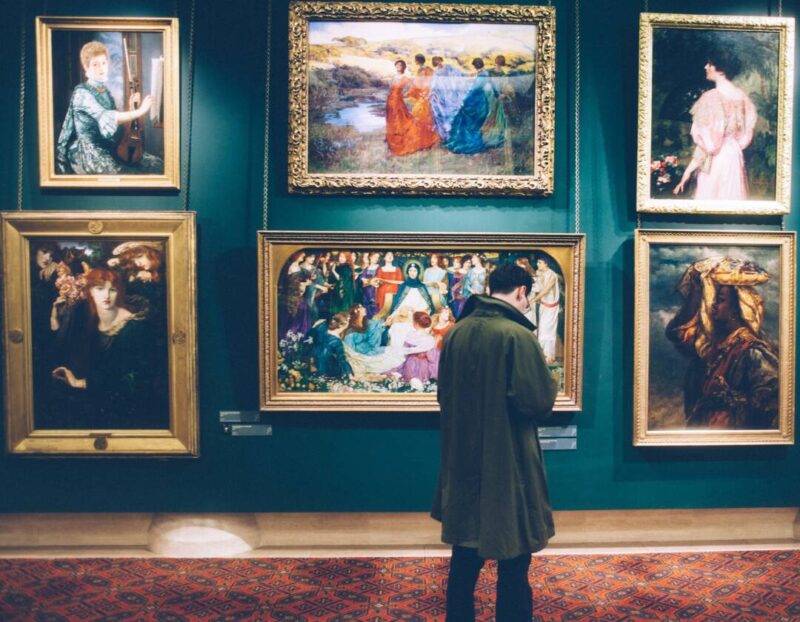
Another way to break the rule is by purposefully choosing a subject that contrasts with the framing elements. Instead of using a frame to direct the viewer’s attention toward the subject, the photographer can create tension or irony by juxtaposing the subject against its surroundings. This technique challenges the viewer’s perception and forces them to question the relationship between the subject and its environment.
Breaking the rule of framing within the frame can also involve using unconventional framing elements or creating new frames within the image. By incorporating unexpected objects or angles as frames, photographers can create visually striking compositions that engage the viewer in unexpected ways. For instance, a photographer may use a group of people standing in a formation to frame a single person, creating a unique visual narrative that encourages exploration of the relationship between the individuals.
Additionally, breaking this rule allows photographers to experiment with negative space and explore the concept of absence. Instead of filling the frame with framing elements, they can intentionally leave empty space around the subject, emphasizing its isolation or insignificance. This technique can evoke a sense of loneliness, vulnerability, or emptiness, provoking emotional responses from the viewer.
In conclusion, while the rule of framing within the frame is a valuable compositional guideline in photography, breaking this rule can lead to innovative and thought-provoking images. By intentionally subverting conventional framing techniques, photographers can create compositions that challenge the viewer’s perception, evoke emotions, and encourage exploration. Breaking the rule of framing within the frame opens up a world of creative possibilities, allowing photographers to push the boundaries of traditional composition and create visually captivating images.
High ISO
High ISO settings are often avoided in photography to reduce noise and maintain image quality. However, intentionally using high ISO can result in grainy or textured images that add character and evoke a vintage or nostalgic feel. This technique can be particularly effective in low-light situations or when you want to create a specific mood or aesthetic in your photographs. Modern professional cameras produce sharp noiseless images even at relatively high ISO settings.
ISO refers to the sensitivity of the camera’s image sensor to light. Typically, photographers strive to use the lowest ISO possible to achieve the cleanest and most noise-free images. However, there is a realm of creative possibilities waiting to be explored by embracing the higher ISO range. Here we are going to learn the artistic potential of high ISO in photography, highlighting how it can be harnessed to create unique and captivating images.
Creative Use of High ISO in Photography
- Embracing Grain and Texture: High ISO settings introduce grain or noise into an image, which can add a unique aesthetic quality and texture to photographs. By purposefully utilizing high ISO, photographers can create a gritty or vintage look that evokes nostalgia or a sense of timelessness. The added grain can infuse the image with a character, enhancing the atmosphere and evoking emotions.
- Capturing Low-Light Environments: One of the primary advantages of high ISO is its ability to allow photographers to capture images in low-light conditions. Whether shooting in dimly lit interiors, at dusk or dawn, or during nighttime, a higher ISO enables the camera to gather more light and capture scenes that would otherwise be challenging or impossible to photograph. This opens up a whole new world of possibilities for capturing moody, dramatic, or ethereal scenes bathed in ambient light.
- Conveying Intimacy and Realism: When shooting portraits or candid moments, using a higher ISO can add a sense of intimacy and authenticity to the image. The slight grain and increased sensitivity can create a raw, documentary-style effect, making the viewer feel more connected to the subject. This technique can be particularly effective for street photography or capturing the vibrancy of everyday life.
- Expressing Motion and Energy: In dynamic situations where motion is involved, high ISO settings can be utilized to capture the essence of movement. Whether photographing sports events, concerts, or bustling city streets, the higher sensitivity allows for faster shutter speeds, freezing action, and preserving the energy of the scene. The resulting images can be filled with a sense of dynamism and vitality.
- Pushing Creative Boundaries: By intentionally pushing ISO settings beyond their standard range, photographers can experiment with intentionally introducing noise or grain as an artistic element. This unconventional approach can lead to abstract or surreal images that challenge traditional norms and push the boundaries of creativity. Such experimentation can yield unexpected and fascinating results, providing a fresh perspective on familiar subjects.
Compositional Rules
Traditional compositional rules, such as leading lines, symmetry, and balance, provide a foundation for creating visually pleasing images. However, breaking these rules can lead to visually arresting and unconventional compositions. These 10 Photography Rules that You Should Break will help you improve your creativity. Experiment with asymmetry, unusual perspectives, and chaotic arrangements to add a sense of tension, intrigue, or emotional impact to your photographs. By challenging the norms, you can create unique and memorable images that stand out from the crowd.
Remember, these rules are meant to be broken with intention and creativity. It’s crucial to have a solid understanding of the fundamental principles of photography before breaking them. By exploring and pushing the boundaries of traditional techniques, you can develop your unique style, create visually compelling photographs, and express your artistic vision.